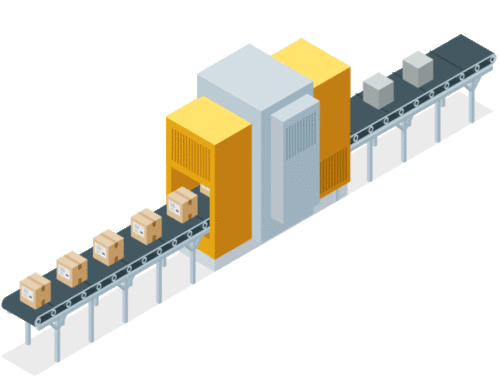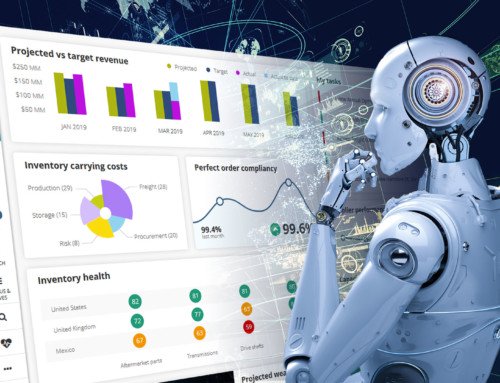
Maximize your profits by reducing the Cost to Serve in your Supply Chain
In the complex world of supply chain management, mastering the concept of Cost to Serve is crucial to ensuring your company’s prosperity.
Understanding and minimizing this cost is not just a strategy, it’s the winning equation that will push your business to new heights of profitability.
Let’s discover the components of Cost to Serve in Supply Chain, how to calculate it, and above all, let’s reveal the tactics to reduce it, in order to maximize your profitability.
Your road to maximum profitability starts here!
1. Cost to Serve: a catalyst for profitability
In Supply Chain, the notion of Cost to Serve encompasses all costs associated with the supply of a product or service. This includes both direct and indirect costs, distributed throughout the various stages of the supply chain.
By optimizing these costs, you’re not only generating substantial savings; you’re also laying the foundations for future, sustainable growth. This optimization becomes the glue for solid, consistent profitability.
Let’s discover the tangible benefits of Cost to Serve optimization, creating a virtuous circle that benefits your business.
Substantial costs savings
When you identify sources of cost and inefficiency within your supply chain, it goes far beyond simple numbers. It involves an in-depth analysis of processes, suppliers, logistics routes, and relationships with partners. By examining each step, you’ll discover optimization opportunities you may not have considered. For example, reviewing supplier contracts, automating manual processes, or optimizing transport routes can lead to substantial savings. Investment in cutting-edge technologies can also play a crucial role, providing real-time data for more informed decision-making.
Improve customer satisfaction
Efficient management of your Cost to Serve translates into an improved customer experience. By eliminating unnecessary supply chain costs, you can offer quality products and services at optimized costs. This translates into competitive positioning in the market, boosting customer satisfaction. Customer loyalty is also enhanced when products are delivered on time, without errors. Investing in effective returns and complaints management also helps to build customer confidence.
Enhanced profitability
Efficient management of your Cost to Serve translates into an improved customer experience. By eliminating unnecessary supply chain costs, you can offer quality products and services at optimized costs. This translates into competitive positioning in the market, boosting customer satisfaction. Customer loyalty is also enhanced when products are delivered on time, without errors. Investing in effective returns and complaints management also helps to build customer loyalty.
Efficient use of resources
Identifying areas of resource wastage is an iterative process that requires an in-depth understanding of supply chain operations. This can include assessing stock levels, analyzing product turnover rates, and optimizing ordering processes. Training staff in the optimal use of new technologies is also a key component of this approach.
Mastering Cost to Serve is complex. It’s a strategy that requires careful analysis, strategic adjustments, and constant adaptation to market trends. Structuring your processes around this strategy will enable you to build the foundations for sustainable profitability, increased operational efficiency, and market competitiveness. Cost to Serve optimization is therefore becoming an imperative for companies concerned with their long-term growth.
2. Cost to Serve components
Understanding Cost to Serve requires careful exploration of every stage in the supply chain, from supplier to end customer. This involves a precise evaluation of the various components, whether direct, indirect, support or hidden costs.
Direct costs: Measurable and allocable
Direct costs represent expenses directly linked to the supply of a product or service. A concrete example would be transportation costs, calculated precisely for each shipment from the supplier to the end customer. Another example would be storage costs, which include the warehousing costs required to preserve products, as well as handling costs, which may include charges for unloading goods at each stage of the supply chain. Destruction of defective or expired products and delivery costs are also concrete examples of direct costs. The precision with which these costs are calculated enables their impact on Cost to Serve to be clearly identified.
Indirect costs: Essential to operational efficiency
Although indirect costs cannot be directly attributed to a specific activity, they are crucial to the overall smooth running of the supply chain. For example, operations planning involves costs linked to the use of integrated management software. Coordination between stakeholders may require investment in advanced communication systems. Similarly, the management of customer returns and complaints can generate operational costs to ensure a smooth process. These costs, although not directly measurable, play an essential role in the overall efficiency of the supply chain.
Support costs: Pillars of operational stability
Support costs are associated with essential functions to maintain the stability and sustainability of the supply chain. Supplier management requires investment in systems to monitor and evaluate supplier performance. Risk management involves costs associated with setting up mitigation mechanisms and business continuity plans. Information management costs may include the acquisition and maintenance of IT systems. Finally, human resources management encompasses the costs of working time, recruitment, training and retaining the skilled personnel required for an efficient supply chain.
Hidden costs: the subtle but significant impact
Hidden costs, though difficult to quantify, leave a significant footprint on Cost to Serve. Delays in the supply chain, for example, can result in costs linked to contractual penalties. Stock-outs can generate costs linked to lost sales and brand reputation. Operational inefficiencies, such as outdated processes, can lead to additional costs in terms of time and labour. Errors in demand forecasting can result in costs associated with overproduction or stock-outs. Finally, quality problems can lead to product recall costs, replacements and lost customers. Although difficult to quantify, these hidden costs deserve special attention when optimizing Cost to Serve.
By adopting a systematic and detailed approach to evaluating each of these components, companies can gain a comprehensive view of their Cost to Serve, thus promoting informed decisions and targeted optimizations within their Supply Chain.
3. Optimizing Cost to Serve: the keys to efficient management
To leverage the benefits of good Cost to Serve management, the adoption of standards and best practices becomes imperative. The fundamental pillars of this approach include a constant commitment to continuous improvement, close collaboration with supply chain partners, and the implementation of performance measurement and monitoring mechanisms.
In-depth process evaluation and analysis
Careful evaluation of Supply Chain processes is the first key to identifying significant Cost to Serve optimization opportunities. This comprehensive approach highlights not only inefficiencies but also sources of cost, providing a solid basis for strategic improvements.
By examining every stage of operational processes, from order management to stakeholder coordination, the analysis reveals areas where adjustments can be made to increase efficiency. For example, identifying delays in order processing can lead to solutions aimed at reducing waiting times, thus minimizing the associated costs.
A focus on inventory management can optimize stock levels, avoiding unnecessary excess while ensuring adequate availability. Similarly, analysis of transport routes can reveal opportunities to consolidate shipments, reducing transport costs and contributing to a more environmentally-friendly approach.
Together, these detailed assessments identify opportunities for Cost to Serve optimization that go beyond simple cost reduction. It paves the way for strategic adjustments, ensuring a more efficient, resilient Supply Chain, positioned to maximize profits while meeting changing market demands.
Design customized strategies
Designing strategies to optimize Cost to Serve is a crucial and fully customizable step, resulting from detailed analysis of processes within the Supply Chain. This customization depends on a detailed understanding of the specific needs and challenges encountered at each stage. Every company has unique needs, and it is precisely this uniqueness that guides the design of tailor-made solutions.
This tailor-made approach guarantees Cost to Serve optimization that goes beyond operational efficiency to create a solid foundation for sustainable growth and profitability.
Implementing best practices
When designing customized strategies to optimize Cost to Serve, it’s essential to draw on proven standards and best practices. By adopting these standards, your company can rely on methods that have already been validated, thus avoiding “reinventing the wheel”.
While standards provide a valuable reference, the key lies in adapting them to your company’s specific needs. This can include customizing monitoring indicators to reflect critical aspects of operational performance specific to the company.
In conclusion, incorporating standards and best practices into the design of customized strategies is a wise approach to optimizing Cost to Serve. This provides a proven foundation from which to customize company-specific solutions, ensuring efficient management aligned with industry best practice.
Use of new technologies
To achieve effective Cost to Serve management, integrating innovations can play a key role in modernizing supply chain practices. The automation of logistics processes offers considerable efficiency gains. For example, the implementation of automated order-picking systems in warehouses reduces order processing times, minimizing labor costs and speeding up product delivery.
Demand forecasting solutions powered by artificial intelligence enable more accurate anticipation of market needs. Optimizing transport routes reduces logistics costs and minimizes environmental impact. A concrete example would be the use of advanced software to determine the most efficient routes taking into account real-time traffic conditions, thus reducing transport costs and carbon emissions.

Conclusion : mastering the Cost To Serve concept is not just a wish, it’s a necessity
To conclude this in-depth exploration of Cost to Serve in Supply Chain Management, remember this: mastering this concept is not just a wish, it’s a necessity for your company’s success!
Every step, every analysis, every customized strategy and every technological innovation you implement contributes to strengthening your market position, improving your operational efficiency and driving your business to new heights.
Don’t think of Cost to Serve optimization as a task, think of it as a mission. As a leader, you have the power to transform your supply chain and lead your company into a future where profitability and efficiency are king.




